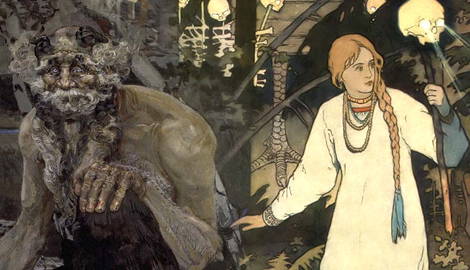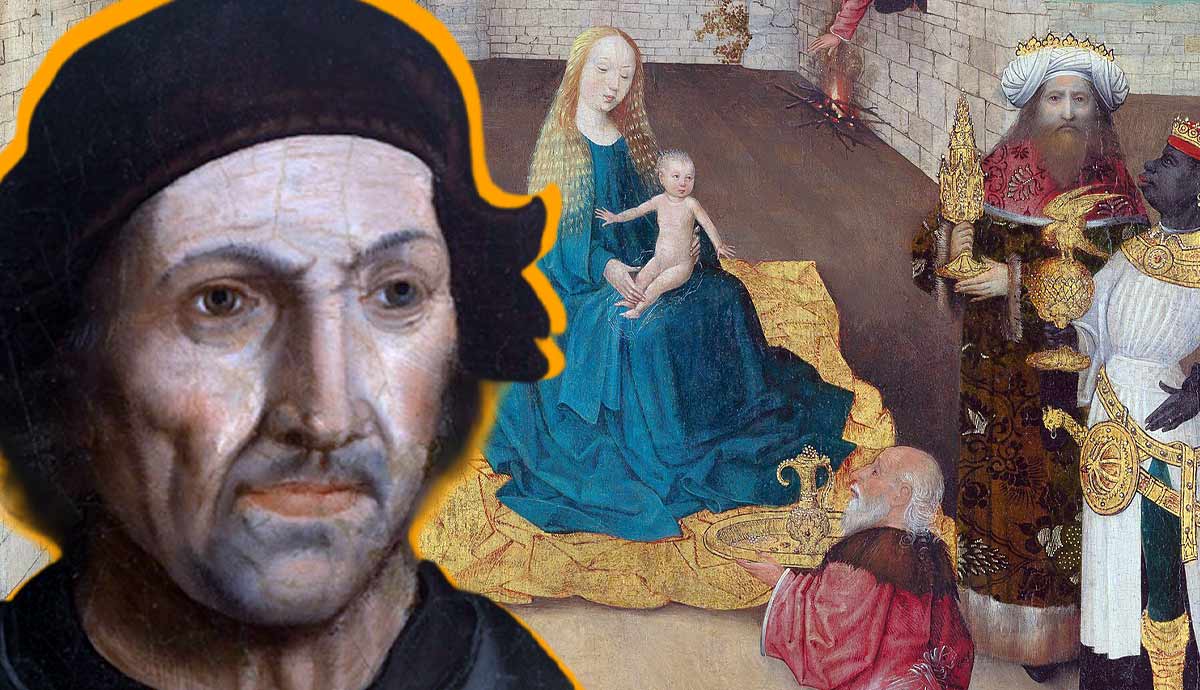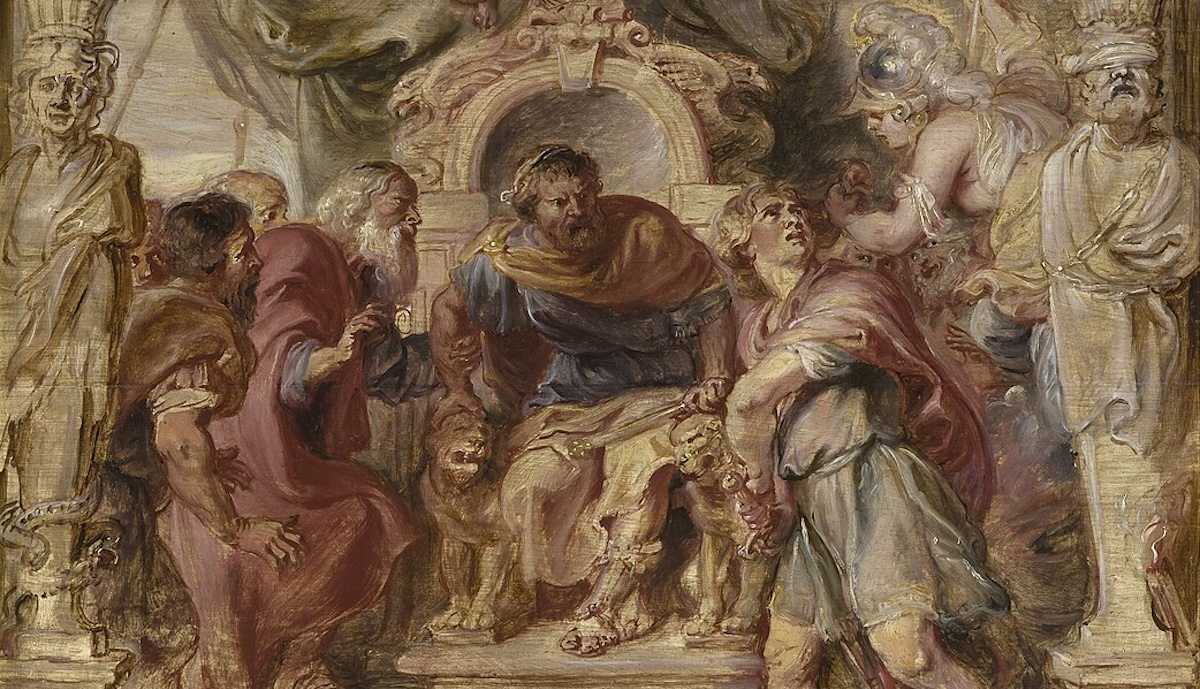
Slavic mythology features a diverse catalog of beliefs, stories, and characters, which were once pivotal to people inhabiting the land that spanned from Central to Eastern Europe. Although it was never uniform throughout the territory, many legends and creatures had common roots and similar archetypal meanings. After the spread of Christianity, many of those creatures remained in folk culture, fairytales, and visual arts, sometimes gaining extra meanings and contexts. Read on to learn more about 5 creatures from Slavic Mythology depicted by modern and contemporary artists.
1. Mokosh, the Mother Goddess of Slavic Mythology

Mokosh was the Mother Goddess of the Slavic pantheon, the deity of fertility and femininity. She watched over all aspects of feminine existence, from childbirth to household errands. Mokosh represented both the entire nature and every woman as a part of it. The practices of sewing and weaving, crucial to pre-Christian communities, were also the domain of Mokosh. Not only did those hand-made objects serve practical functions, but they also served as protective amulets.
Anna Samoylova, a young artist born in Moscow, Russia, uses Slavic mythology as a core stylistic and symbolic inspiration in her works. Her 2020 exhibition Mokosh centered around the image of a long-forgotten goddess, reimagining her as a symbol of feminist resistance and contemporary femininity. Samoylova’s idea was to remind her audience how different the traditional treatment of women was from the contemporary one, with celebration and respect in place of shaming and pressure.
Samoylova used Mokosh as an opposing force fighting against domestic violence, institutional sexism, and gendered standards. Next to the portrait of the goddess, she placed trees covered with ribbons allowing the exhibition visitors to leave notes expressing their fears, wishes, and thoughts on femininity. Soon after the Russian invasion of Ukraine unfolded, Samoylova and her family left Russia. Currently, the artist is exploring the possibility of using folk art and centuries-old traditions as tools of protest and non-compliance.
2. Vasilisa The Beautiful

Ivan Bilibin was a famed Art Nouveau illustrator and stage designer known for his illustrations of Slavic fairytales. Among the most famous ones was the image of Baba Yaga and Vasilisa, a teenage girl and popular protagonist of folktales centered around the initiation ritual. Vasilisa’s story shares many aspects of the Western Cinderella story. After losing her mother at a young age, she had to live with her evil stepmother and two stepsisters, who tormented and basically enslaved her. One winter night, the stepdaughters purposefully put out the only candle and demanded Vasilisa go deep into the forest and ask Baba Yaga for fire. After completing several tasks for Yaga, Vasilisa receives a human skull with glowing eyes, which burns down her stepmother’s house with her daughters inside. Although some folklorists believe the tale’s message to be questionable and overly violent, others interpret it as a story of coming of age and claiming responsibility for one’s own life instead of following orders.
According to folkloric research, before the Christianisation of Slav lands, Baba Yaga was the guardian of the border between the worlds of the dead and the living, neutral in her character. Her hut was the coffin she was buried in, and the protagonist had to come inside to enter the world of the dead. Moreover, in classic tradition, Baba Yaga was not human but a giant serpent with the head of an old woman.
Despite these macabre details, she was ready to help the fairytale protagonists if they treated her with respect. However, after the Christian faith had settled in, the old beliefs gradually gained unpleasant connotations. Helpful creatures and neutral forces often turned into demonic beings ready to harm god-fearing Christians and lure them to the path of serving the devil. Thus, Baba Yaga turned into a vicious cannibal hag who cooked children in her stone oven.
3. Leshy, the Guardian of the Forest

Mikhail Vrubel was a Symbolist painter who worked with mythology, folklore, and literature of both Eastern and Western Europe. Known for his mosaic-like painting style, Vrubel created his dark and dreamy worlds attempting to escape his tormented mental state. In the late 1890s, Vrubel worked on his Fairytale Cycle, a series of paintings depicting characters from Slavic folklore and fairytales. Although the painting above was titled Pan (the Greek god of wilderness, woods, and shepherds) its iconography mostly resembles Leshy, the guardian of the Slavic forest.
Leshy, also known as Lesovik, Leshak, or Borovoy, has many different names throughout the Slavic countries, yet his characteristics remain the same. In most legends, Leshy presents himself as an old man dressed in rags, but he is also able to shapeshift and change his height from being as small as a mushroom to as tall as a pine tree.
Although many folk beliefs blame Leshy for luring hunters deep into forests to their deaths and stealing children (in the same fashion as Western European fairies), old folkloric sources actually indicate that Leshy would not attack a human without reason. Like with most folkloric creatures, respect was the key tactic to survive an encounter with the being. People who entered the forest that was occupied by Leshy had to follow a strict set of rules: avoid littering, breaking trees, and killing more animals than needed to sustain themselves, and leave an offering of eggs and bread. If satisfied with his guests’ behavior, Leshy would help them hunt or guard their cattle.
Sometimes Leshy could get bored and entertain himself by luring travelers to the forests and making them walk in circles, unable to find a way out. In that case, the easiest way to escape was to make Leshy laugh. That could usually be done by turning one’s clothes inside out and switching your shoes from right foot to left.
4. Mermaids

Mermaids are popular folklore characters throughout the entire world, yet the Slavic version of these creatures has enough distinctive features. Known as rusalki or mavki, these beings live mostly in the water but have no fishtails. Instead, they walk on two legs like humans and often climb trees to hide in their branches.
The Mermaids by Ivan Kramskoi is an illustration of a short story by Ukrainian writer Nikolai Gogol, titled May Night, or The Drowned Maiden. According to Ukrainian folklore, mermaids were the undead young maidens who drowned themselves because of unrequited love. Unable to find peace, at night they climb to the banks of ponds and rivers and brush their long unkept hair with fish bones.
Just like sirens from Greek mythology, their beauty and singing attracts men passing by. If a man, tempted by the song of rusalki, approaches them, he would be tied up with their long hair and dragged underwater.
Women were not safe either: while the water beings are not interested in them as prey, in many stories they chase them away from villages to eliminate competition for male attention. However, another version of the story imagines Slavic mermaids as pale little girls or small ugly aggressive creatures. In this case, these were not the souls of undead women but children murdered by their mothers before baptism, unable to leave the world of the living, they were looking for revenge.
5. Sirin and Alkonost: The Prophetic Birds of Slavic Mythology

Sirin and Alkonost were the mythical creatures that appeared in Slavic folk culture from the Middle Ages. The looks of these half-birds and half-women hint at their possible connection to the Ancient Greek legends about sirens. However, Sirin and Alkonost did not necessarily bring danger and demise to those who could hear them sing.
In most folkloric and artistic sources, both birds appear together and represent the dichotomy of human existence and the process of natural death and rebirth. Sirin, the dark-feathered and pale being, was the bird of sorrow that cries over everything lost and passed. Her counterpart, Alkonost, is a bright and joyful being with rosy cheeks who celebrates abundance and new beginnings.
According to legends, the two birds reveal themselves to humans on the Feast of Transfiguration in August, which in Eastern Europe is often called Apple Feast. Both creatures sit on apple trees, with Sirin mourning the end of summer and Alkonost laughing loudly, with her laughter blessing the apples and giving them healing powers.
According to written sources, the presence of Alkonost and Sirin was established in Slavic mythology after the spread of Christianity. Partially inspired by Greek and Byzantine sources, they were described as birds of Paradise, symbolizing divine providence. Although they never intended to harm humans, sometimes their singing could charm one’s soul out of their body and ascend it to heaven.










